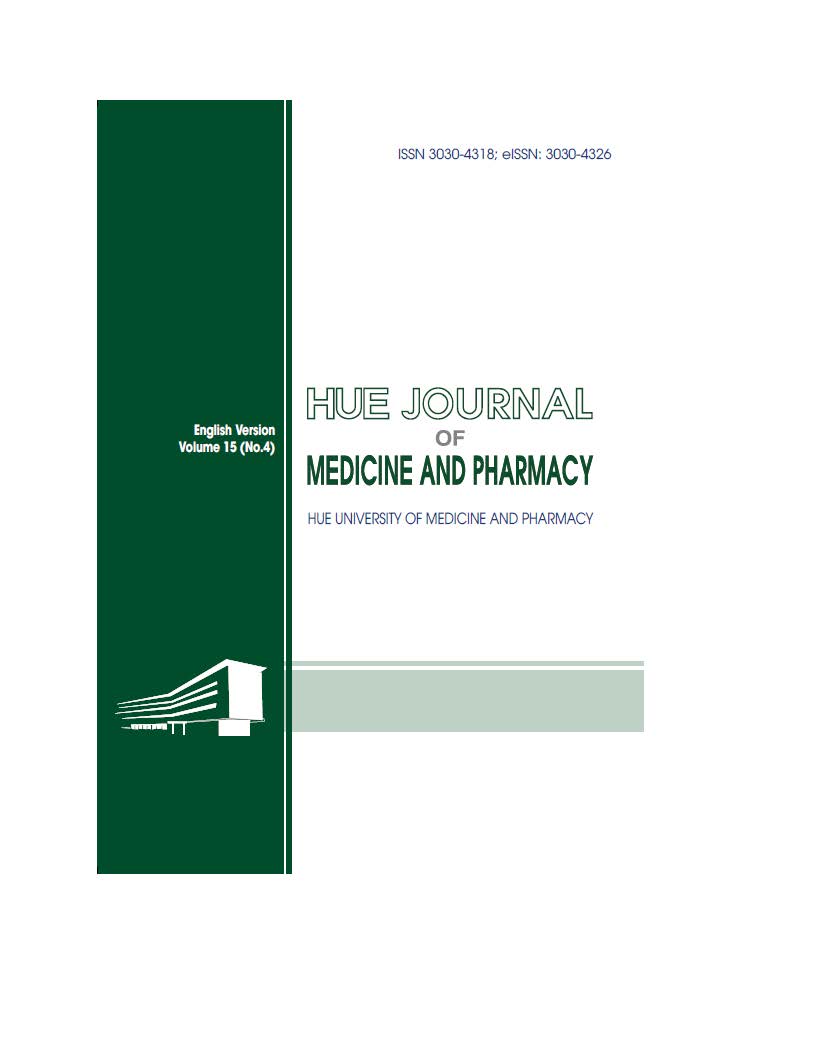Abstract
Background: Based on research activities and clinical practice at Nghe An Friendship General Hospital, we conducted this study to evaluate the outcomes of laparoscopic splenectomy using Hem-O-Lok clips at our institution.
Introduction: A retrospective, cross-sectional study on 38 patients who underwent laparoscopic splenectomy at the Nghe An General Friendship Hospital from January 2020 to January 2025.
Methods: A retrospective, cross-sectional study on 38 patients who underwent laparoscopic splenectomy at the Nghe An General Friendship Hospital from January 2020 to January 2025.
Results: There were 38 patients, including 27 males (71%) and 11 females (29%), with an average age of 39.5 ± 10.2 years (range 18 - 65 years). The the main indications for splenectomy included hematologic disorders (34.2%), splenic tumors (34.2%), and splenic cysts (21.1%). The success rate of the surgery was 36 cases (94.7%), with total splenectomy performed in 33 cases (86.8%) and splenectomy with accessory spleen removal in 3 cases (7.9%). Splenic artery control at the splenic hilum was achieved in 12 cases (33.3%). Postoperative complications were observed in 5 cases (13.2%), including wound infection, pancreatic fistula, and splenic vein thrombosis. Good outcomes were achieved in 86.1% of patients, with no poor outcomes recorded.
Conclusion: Laparoscopic splenectomy for the treatment of hematopoietic disorders and intrinsic diseases of the spleen is a safe method with a high success rate. The use of Hem-O-Lok instead of staplers for vascular control helps reduce surgical costs while still providing good outcomes for patients.
| Published | 2025-08-30 | |
| Fulltext |
|
|
| Language |
|
|
| Issue | Vol. 15 No. 4 (2025) | |
| Section | Case Reports | |
| DOI | 10.34071/jmp.2025.4.21 | |
| Keywords | Laparoscopic splenectomy, Hem-O-Lok clips, splenic pedicle control, splenic surgery outcomes |

This work is licensed under a Creative Commons Attribution-NonCommercial-NoDerivatives 4.0 International License.
Copyright (c) 2025 Hue Journal of Medicine and Pharmacy
B Delaitre and B. Maignien. Splenectomy by the laparoscopic approach. Report of a case. Press. Med. 1991; 20(44), p. 2263.
E. P. Misiakos, G. Bagias, T. Liakakos, and A. Machairas. Laparoscopic splenectomy: Current concepts,” World J. Gastrointest. Endosc. 2017; vol. 9, no. 9, p. 428. doi: 10.4253/wjge.v9.i9.428.
Nguyễn Ngọc Hùng, Quách Văn Kiên, Nguyễn Văn Trường. Cắt lách nội soi: một số nhận xét về chỉ định, kỹ thuật và biến chứng. Tạp chí Y học thành phố Hồ Chí Minh. 2008;12(4), pp. 137–142.
Nguyễn Hoàng Bắc, Huỳnh Nghĩa, Lê Quan Tuấn Anh. Phẫu thuật nội soi cắt lách điều trị xuất huyết giảm tiểu cầu. Tạp Chí Học Thành Phố Hồ Chí Minh. 2003; 7(1), pp. 56–59.
S. C. Katz and H. L. Pachter. Indications for splenectomy. Am Surg. 2006;vol. 72, no. 7, pp. 565–580.
M. Tan, C. X. Zheng, Z. M. Wu, G. T. Chen, L. H. Chen, and Z. X. Zhao. Laparoscopic splenectomy: The latest technical evaluation. World J. Gastroenterol. 2003; 9(5), pp. 1086–1089. doi: 10.3748/wjg.v9.i5.1086.
P. Bhattacharya, L. Phelan, S. Fisher, S. Hajibandeh, and S. Hajibandeh. Robotic vs. Laparoscopic Splenectomy in Management of Non-traumatic Splenic Pathologies: A Systematic Review and Meta-Analysis. Am. Surg. 2022; 88(1), pp. 38–47. doi: 10.1177/0003134821995057.
B. Chand, R. M. Walsh, J. Ponsky, and F. Brody. Pancreatic complications following laparoscopic splenectomy. Surg Endosc. 2001;15(11) pp. 1273–1276.
L. Baldari, L. Boni, B. Giuliani, and E. Cassinotti. Porto-spleno-mesenteric venous thrombosis after elective splenectomy: a retrospective cohort study. Front Immunol. 2023;pp. 1–8.
B. Habermalz, S. Sauerland, G. Decker, B. Delaitre, and J.-F. Gigot. Laparoscopic splenectomy: the clinical practice guidelines of the European Association for Endoscopic Surgery (EAES). Surg Endosc. 2008;vol. 22(4), pp. 821–48.
R. Buzelé, L. Barbier, A. Sauvanet, and B. Fantin. Medical complications following splenectomy,” J. Visc. Surg. 2016; 153(4), pp. 277–286. doi: 10.1016/j.jviscsurg.2016.04.013.






